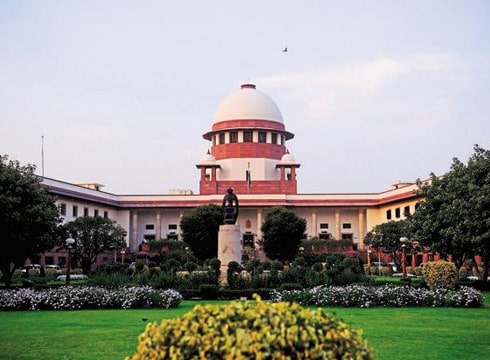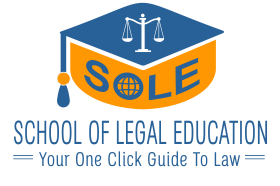
Libel v. Slander
Defamation is not an unheard term for the common people too, as every now and then, news related to such a case is featured and highlighted. Defaming is the act of maligning someone’s reputation through libel or slander.
To establish or prove defamation, these three important essentials factors should be there:
- The statement must be defamatory and damaging.
- It must be directed to the claimant.
- It must be communicated or published to at least one person other than the claimant.
Right to reputation is an inherent right guaranteed by Article 21 and therefore, to safeguard this, the right to freedom and speech bestowed by Article 19 of the Indian Constitution, is not absolute.
Difference Between Libel and Slander:
That libel and slander are two different forms of defamation, may not be known to many of us.
- Libel: An intransigent form of defamation, one that is permanent in nature, for example, writing, photograph, film, statue, printing, picture, effigy, etc. Hence, statements in books, newspapers, articles, letters, etc. that tarnishes someone’s reputation are libels. Additionally, anything that can be viewed by people like film or statue, and is denigrating, are also libels.
- Slander: This is a transient form of defamation, temporary in nature, generally caused by gestures or spoken words. This includes statements made verbally or gesticulations that vilifies a person’s reputation.
Thus, it is obvious that both of these are features of the tort of defamation and are regulated by similar principles. While libel is a defamation that is addressed to the eye, slander is addressed to the ears.
Defamation & Indian Law:
Both the forms of defamation, libel, and slander, are not distinctly considered different from each other in Indian Law. A person so defamed can seek relief in the form of damages under civil laws and punishments under the criminal law.
The civil law for defamation has not been codified in the form of legislation and therefore, is covered by the law of torts. Under such circumstances, the claimant is required to prove that defamation occurred.
The criminal law clearly defines defamation under Section 499 of the Indian Penal Code, 1860 (IPC) as:
“Whoever, by words either spoken or intended to be read, or by signs or by visible representations, makes or publishes any imputation concerning any person intending to harm, or knowing or having reason to believe that such imputation will harm, the reputation of such person, is said, except in the cases hereinafter expected, to defame that person.”
Furthermore, Section 500, 501 of the IPC enumerates the quantum of punishment in such cases; which could be either fine or simple imprisonment of two years or both.
Case Laws with a special reference to Newspaper Libel:
Freedom of expression and speech is considered a right which is universally accepted. The Supreme Court while hearing the case of Indian Express Newspaper (Bombay) (P) Ltd. v. Union of India,[1] ascertained that freedom of press/media is undoubtedly the strongest pillar of a democratic country like ours. Yet, under no circumstances, it grants the right to defame someone and harm his reputation by false and baseless allegations and by innuendos and insinuations.
Newspaper libel can be said to be defamation caused by publishing a statement that mars a person’s reputation and tends to lower his status in the eyes of right-thinking members of society, so much so that they start avoiding him.
In the case of Vander Zalm v. Times Publishers[2], the Court agreed that a defamed person is regarded with a feeling of disdain, abhorrence, disrespect, loath or horror.
In an interesting case of Radheshyam Tiwari v. Eknath[3] which comes out as a clear-cut example of defamation. The plaintiff accused the defendants of printing false statements regarding allegations that he accepted bribes, issued false certificates, etc. These statements, when investigated, were found to be false, and thus the defendants were charged of defamation.
In other cases, like Jawaharlal Darda v. Manoharrao Ganpatrao Kapiskar[4] and Abdul Wahab Galadari v. Indian Express Newspapers (Bombay) Ltd.[5], the statements published were seen to be hurting the reputation of some but were found to be factual, and hence, did not amount to defamation.
A defamation case can stand further scrutiny only if there is a direct reference to the person in the statement thus made. This was established by the Court in the case of T.V Ramasubha Iyer v. AMA Mohindeen[6].
For a case to stand a chance of action against the publishers, it must be conclusively proved that the statements published were defamatory in nature, as the Court stated in the cases of Mitha Rustomji Murzban v. Nusserwanji Engineer[7] and DP Chaudhary v. Kumari Manjulata[8].
Furthermore, as was determined by the Court in the case of Gurbachan Singh v. Babu Ram[9], the publishing of incorrect information in a newspaper makes the editor liable too, unless there is a contract of that effect.
Proving the falsity of a statement that has been published has to be the basis of any defamatory case. Thus, if a statement is true and factual, fair and bona fide, then it shall not be treated as defamatory in nature. This fact was highlighted by the Court in the case of Dainik Bhaskar v. Madhusudan Bhaskar.
The Last Word!
The dominant outcome of all cases of defamation is that an individual’s right to reputation should be upheld if the statement is not correct
There is an obvious conflict that arises between the freedom of expression, the essence of a democratic society; and the right to reputation, that is a constitutional right bestowed on every individual.
The remedy lies in the hands of publications to be ethical at all times and promote, what is known as ‘responsible journalism’. Freedom of expression is a right that is not ‘absolute’ but comes with riders as it impacts other individuals too. In finding a balance between the freedom that the press enjoys and the responsibility that lies on its shoulder to be truthful, lies the key to protecting themselves from defamation cases.

